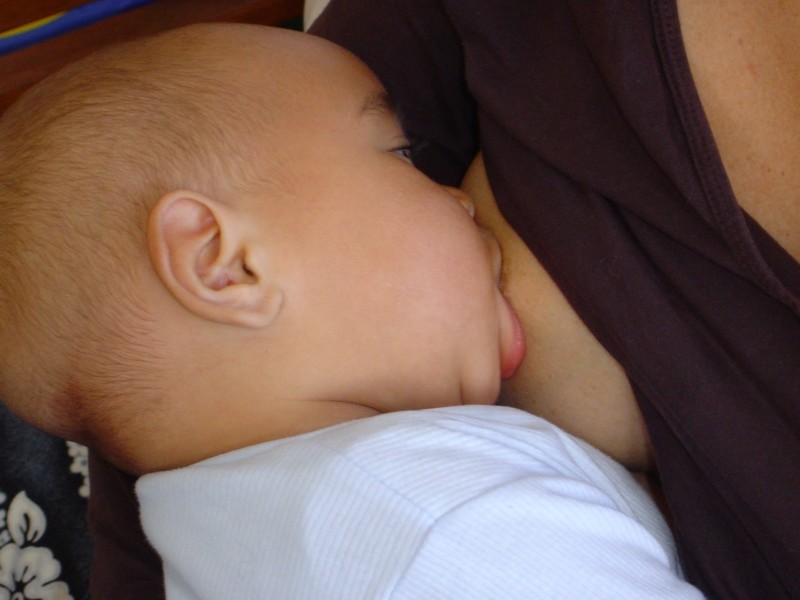Positions
Starting to Breastfeed
Early initiation of breastfeeding is important for successful breastfeeding. You will usually be able to have skin to skin contact soon after birth. Most babies are alert and start to suck immediately.
When your baby feeds, the nipple and areola are taken into the baby’s mouth. With suckling hormones stimulate the glands to let-down milk, baby will feed in bursts, pause and start again. Letting your baby finish the first breast and come off spontaneously helps your supply to establish in the early days. During the first days of feeding, you may feel some contractions in your abdomen as the baby feeds. The usually mild discomfort signals the release of the hormone oxytocin, which helps shrink your uterus back to its pre-pregnancy size.
Breast size does not have an effect on the amount of milk or the quality of milk a woman produces. Milk is made entirely according to a system of supply and demand. The amount of milk which baby drinks one day will affect the amount of milk made the next.
Your position
How you position yourself, how you hold your baby, and how you offer your breast all affect how baby latches on. This will determine how comfortable you and your baby will be during breastfeeding. Choose a comfortable well supported sitting or lying position to avoid getting a stiff back, shoulder or neck muscles, or cracked nipples from the baby poorly latching on to the breast.
- Start by holding your baby horizontally with his head opposite your nipple. Turn your baby completely on his side.
- Tuck his legs under your arm. With your elbow, bring his bottom close to you. Support his neck and shoulder between your spread-out finger and thumb. His head should fall back gently between the V shape your finger and thumb make.
- This helps raise his chin off his chest so that he can open his mouth wide.
- If you are going to feed from your left breast, support your breast underneath with your left hand. Place your fingers away from the areola (the brown area around your nipple). Your little finger should be touching your ribs. Your thumb should rest on the top of the breast, usually on the edge of the areola. Line up the nipple with the baby’s nose, so he will smell the milk and open his mouth wide. His bottom lip will make contact with the areola underneath the nipple but well away from the base of the nipple.
- Try to imagine a piece of velcro attached to your baby’s bottom lip, and a matching piece of velcro attached about 2.5cm/1 inch from the base of your nipple. These imaginary pieces of velcro need to be matched together first. Your thumb can then slide or roll your nipple forward quickly and into your baby’s mouth, just under the roof of the mouth.
Once your baby has taken the breast well into his mouth and has established a good feeding rhythm, you can let go of your breast.
Baby’s position
Having baby correctly attached to the breast is very important for successful breastfeeding.
- When bringing your baby to the breast, support her neck and shoulder between your spread out fingers and thumb. This helps raise her chin off her chest so that she can open her mouth wide and allows her nose to be clear, by baby slightly extending her head back.
- The nipple should be lined up with the nose. Her bottom lip should make contact with the areola (the dark area around the nipple), well away from the base of the nipple. Baby’s lips should be flared (turned outward).
- When baby is feeding she should have a suck swallow pattern (long drawing sucks followed by shorter sucks) with pauses in between. You can see her ears wiggle as her jaw moves.
Feeding may be uncomfortable for the first few seconds after your baby first attaches as the nipple is pulled into the back of the baby’s mouth. However, if that continues to be painful it may be that baby’s position is not quite right. Take your baby off the breast by putting a finger in the corner of her mouth to release the suction and try again.
Signs to watch for when feeding
- your baby is attaching to the breast well
- you can hear her sucking and swallowing
- having at least 6 really wet nappies a day
- is gaining weight and sucking does not hurt
It is important at this time not to give artificial milk.


